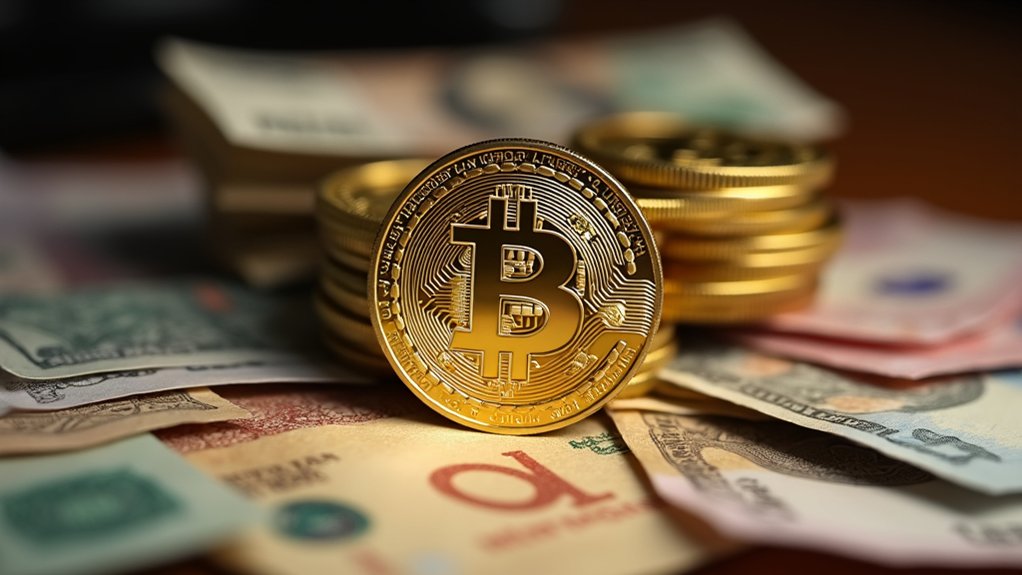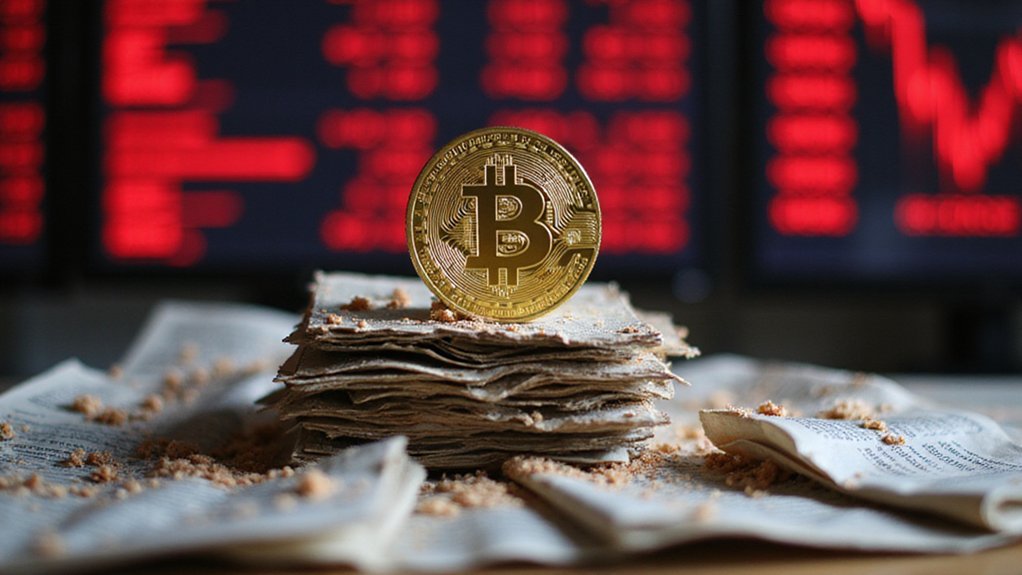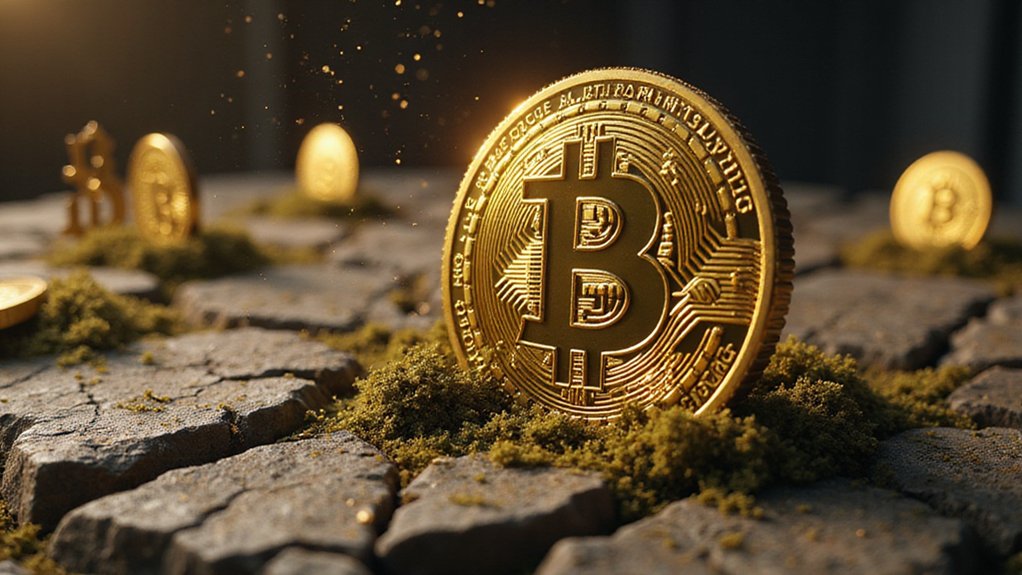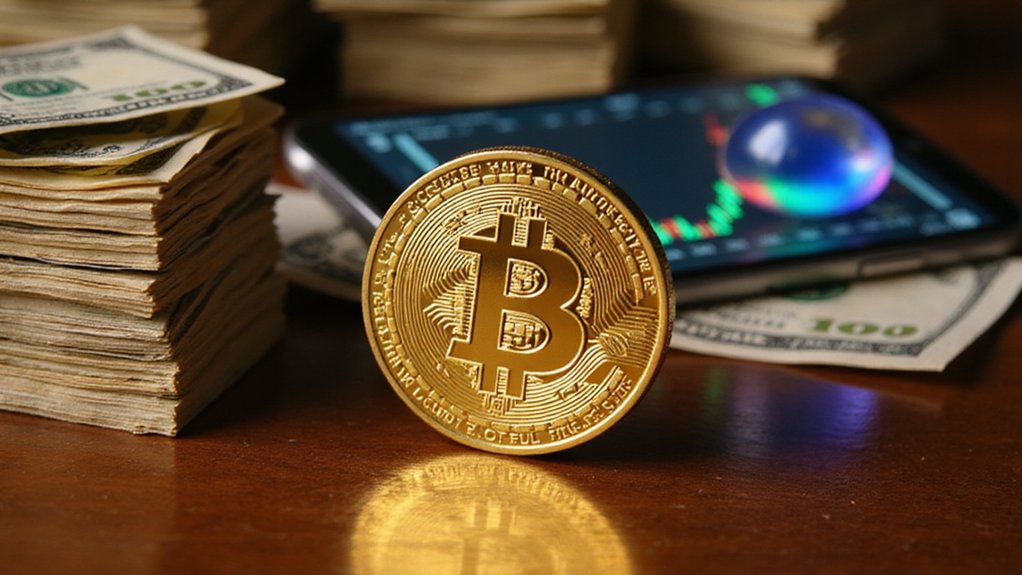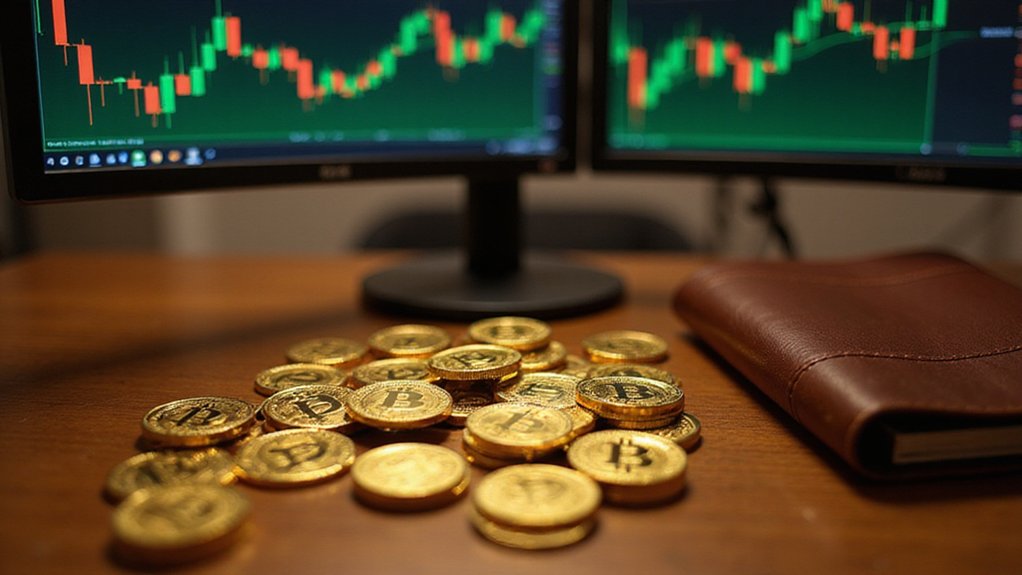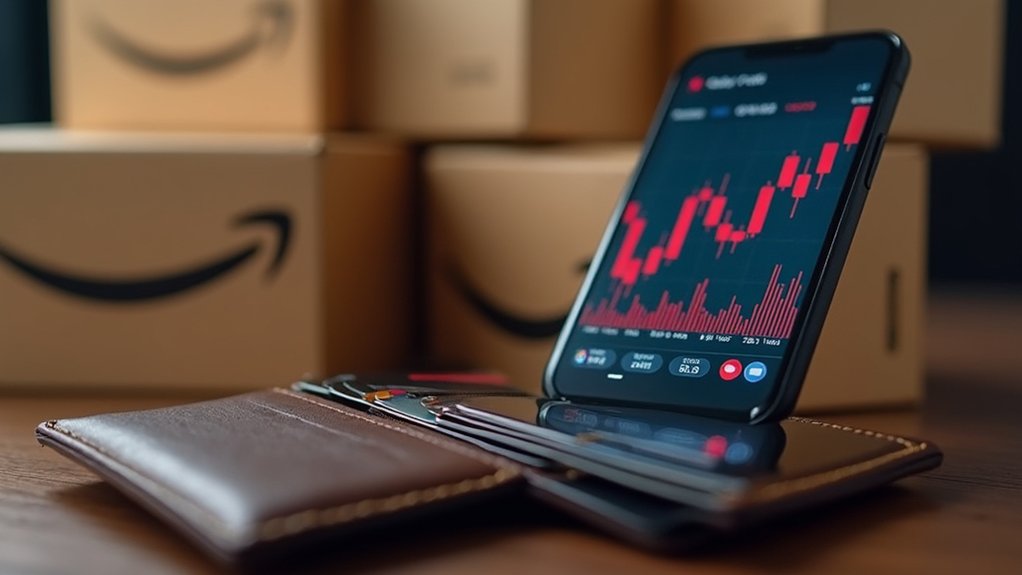Bitcoin’s retail army has achieved what seasoned investors might consider the ultimate market coup: they’re vacuuming up the digital asset faster than miners can produce it, creating a demand dynamic that would make commodity traders weep with envy.
Bitcoin’s retail investors are devouring the digital asset faster than miners can produce it, creating a demand dynamic that defies traditional market logic.
The mathematics are staggering—smaller investors classified as Shrimp (under 1 BTC), Crab (1-10 BTC), and Fish (10-100 BTC) are collectively absorbing roughly 19,300 BTC monthly, obliterating the post-halving supply rate of 13,400 BTC with the enthusiasm of bargain hunters at a liquidation sale.
This price-agnostic buying behavior has propelled Bitcoin to previously unimaginable heights, touching $122,884 in July 2025 before experiencing what analysts delicately term “slight retracement”—a euphemism that would make diplomats proud. The surge culminated after Bitcoin reached near $109,000 following the U.S. administration inauguration, marking a pivotal moment for institutional adoption.
The relentless accumulation pattern suggests retail investors have either achieved zen-like market wisdom or developed an impressive immunity to volatility-induced anxiety.
Meanwhile, mid-tier holders (100-1,000 BTC)—a cohort encompassing hedge funds, family offices, and affluent individuals with apparently impeccable timing—increased their Bitcoin share from 22.9% to 23.07% between January and April 2025.
Their strategic accumulation helped cushion Bitcoin’s descent from $100,000+ to the $70,000-$85,000 range, demonstrating that sometimes the middle ground provides the most stability. Bitcoin’s superior liquidity and transferability compared to traditional assets like gold has made it increasingly attractive to these sophisticated investors seeking digital scarcity benefits.
The market’s structural evolution reveals fascinating behavioral divergences.
While institutions doubled down on Bitcoin and Ethereum with 67% allocations, retail investors pivoted toward memecoins and altcoins, reducing their Bitcoin allocation by 9% to 37%.
This 30 percentage point spread between institutional and retail strategies represents either market maturation or a spectacular case of investment FOMO depending on one’s perspective.
Institutional appetite intensified in April 2025, with sovereign wealth funds treating Bitcoin as a hedge against currency devaluation and macroeconomic instability.
The digital asset’s scarcity, immutability, and non-sovereign portability have transformed it from speculative curiosity into institutional necessity—a remarkable evolution that would have seemed fantastical just years ago.
This confluence of retail enthusiasm and institutional validation has created unprecedented demand dynamics, fundamentally altering Bitcoin’s market structure away from purely retail-dominated cycles toward something resembling a mature asset class. However, retail investor activity has shown signs of softening exposure through ETFs, with individual traders pulling back from direct spot holdings as sentiment remains reactive to short-term market volatility.
